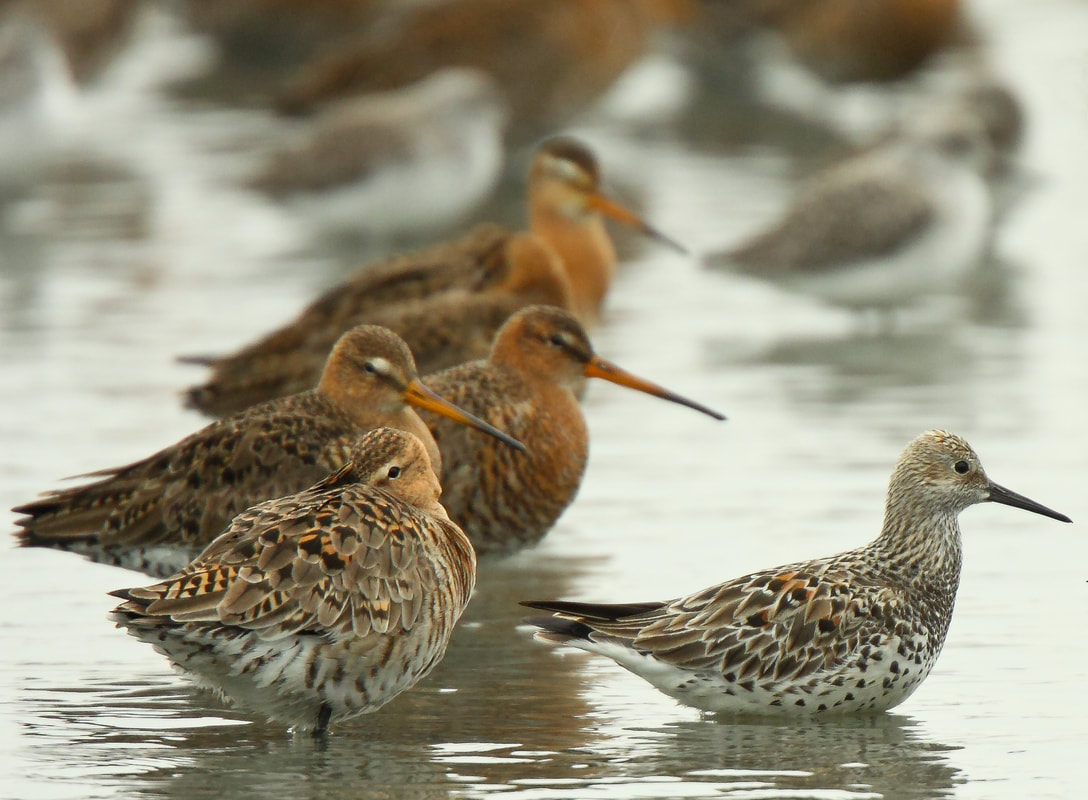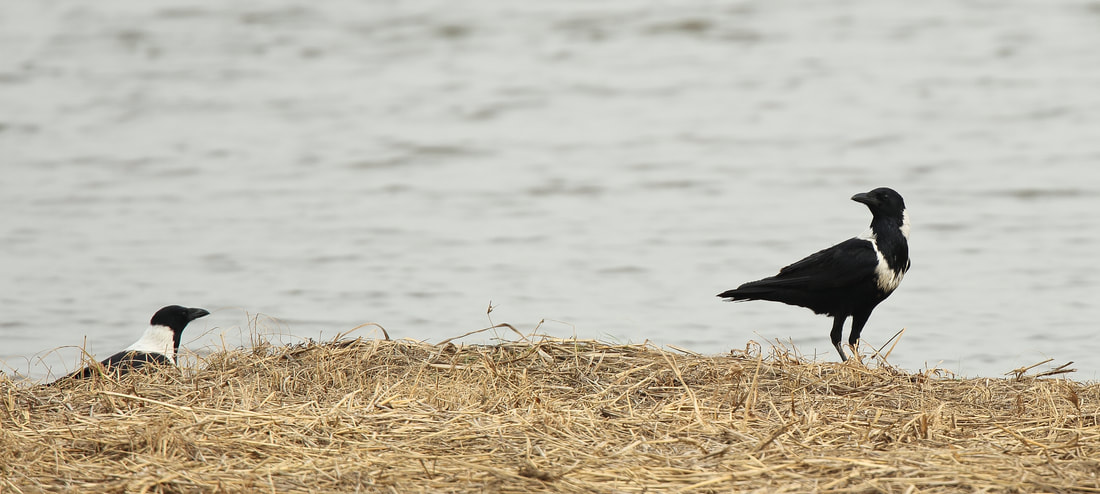|
Recent news from the Ornithological Society of the Middle East (OSME) about a Great Knot ringed in Kamchatka and discovered wintering in the United Arab Emirates in January 2017. The link to the website page describing this discovery is http://osme.org/content/russia-love-or-least-ring-kamchatka-great-knot-reaches-arabian-gulf and there is also a short video about it on YouTube at https://www.youtube.com/watch?v=ucTMKBdUxAo&feature=youtu.be
OSME have pointed out in an online posting about the Great Knot that the species” has recently been up-listed to Endangered according to the IUCN red-list of threatened species based on a recent population decline of about 78% in the Australasian wintering population. Small numbers do winter in the Arabian Peninsula and the sighting of ‘EI’ (as it is affectionately known) has established for the first time a migratory link between the Russian Far East and the Middle East.” That figure of “78%” is deeply disturbing and is presumably a sad indicator of the increasing loss of mud flats on the East Asian flyway.
0 Comments
Most people reading this will be aware of the dire situation with regard to the enigmatic shorebird, the Spoon-billed Sandpiper. The population has declined from 2,000+ breeding pairs in the 1970s to fewer than 250 pairs in 2014. If the current rate of decline continues, the species will be extinct within the next few years.
There is a particularly high mortality rate of young birds, seemingly because of habitat loss on its migration route, especially in the Yellow Sea area, and because of trapping on the non-breeding grounds, namely in Myanmar. A number of conservation groups are working together to try and save the Spoon-billed Sandpiper. Initiatives consist of: (i) encouraging the cessation of trapping on the non-breeding grounds, notably in the Bay of Martaban, Myanmar (ii) establishing a captive breeding programme at Slimbridge in the UK (iii) establishing a headstarting programme where eggs are collected from incubating birds on the breeding grounds and the hatchlings are hand-raised in captivity to fledging age before they are released back into the wild. (iv) working with Chinese conservationists and other Chinese officials to establish protected reserves on the mudflats on the Jiangsu coast, a crucial area for migrant Spoon-billed Sandpipers (and other waders) on the their way to and from their breeding grounds (v) satellite tracking of tagged birds to increase knowledge of the movements of Spoon-billed Sandpipers (currently, scientists do not know where 75% of spoon-billed sandpipers breed and where around 25% winter) Further details of these initiatives, along with latest updates of the 2017 headstarting programme, can be found at http://www.saving-spoon-billed-sandpiper.com . The Collared Crow occurs in southern and eastern China, and northern Vietnam. It is currently listed as Near Threatened by BirdLife International as it seems to be suffering a moderately rapid decline. A paper* in the recent edition of Forktail, the journal of the Oriental Bird Club, looks at the historical literature and compares the Collared Crow’s past status with a review of recent records (2003-2014). The authors conclude there has been a major decline in both the abundance and distribution of the species, primarily because of a change in farming practices since the 1950s, namely agricultural intensification leading to a reduction in food supply combined with an over-use of pesticides. Human persecution is also a contributory factor.
The total number counted during surveys in 2003-2014 amounts to just 1,847 individuals. Of these, 525 were recorded in the Dabie Shan in central China (Henan, Hubei and Anhui provinces) and 362 were recorded in Hong Kong. These two areas (along with Cao Bang in north Vietnam – 120 birds) are therefore of particular conservation importance for this species. The authors suggest that its status be uplisted to Vulnerable. *Leader, P.J., Stanton, D.J., Lewthwaite, R.W. & Matrinez, J. (2016) A review of the distribution and population of the Collared Crow Corvus torquatus. Forktail 32:41-53. |


 RSS Feed
RSS Feed
